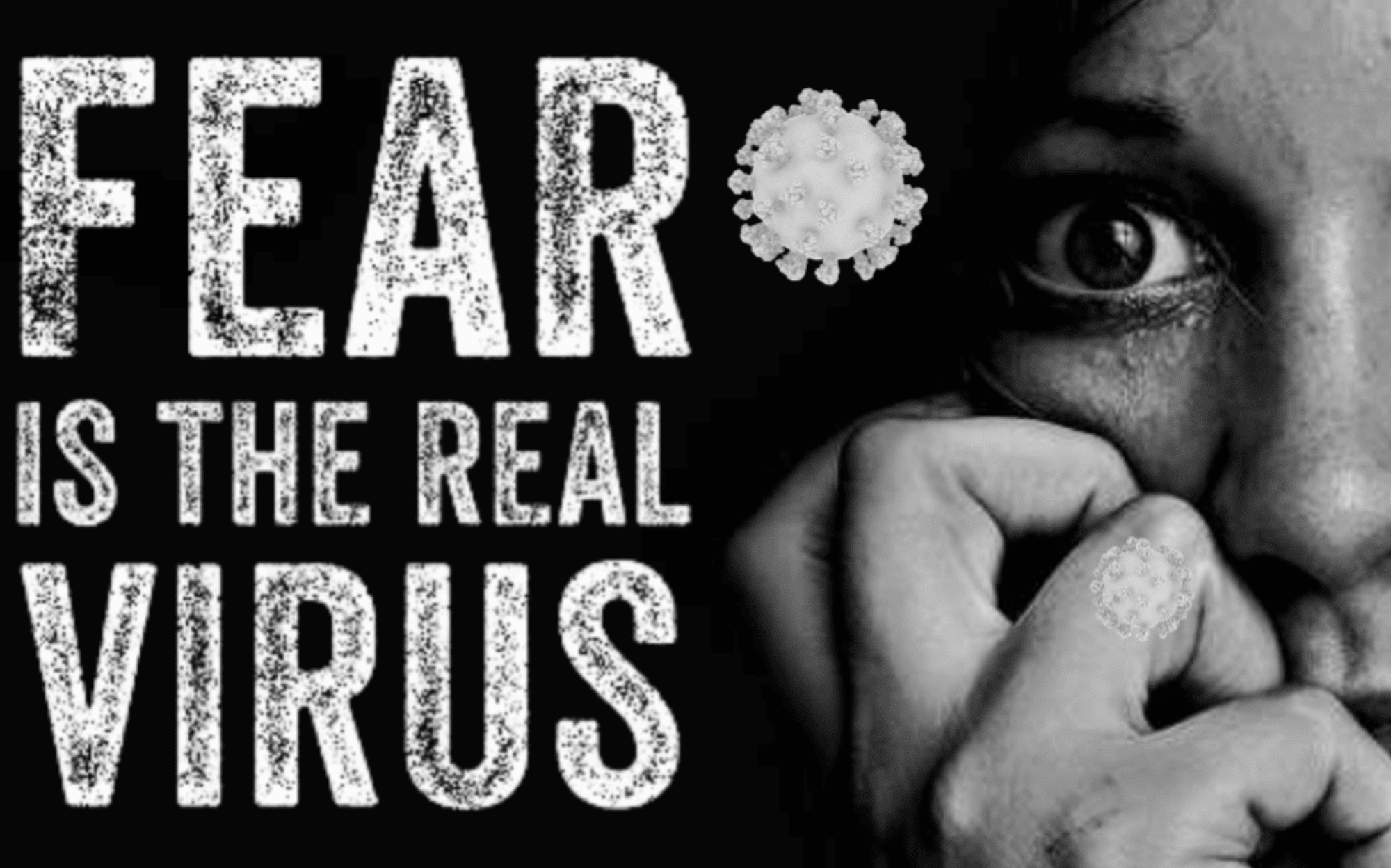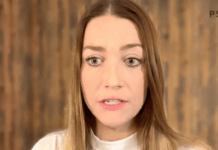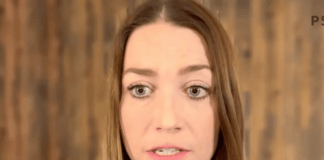The power of the mind to influence our health and well-being was an often overlooked aspect of a “pandemic” that effectively used our emotions as a weapon against us.
There is an invisible pathogen infecting the population, one as ancient as time itself, capable of disrupting societies and toppling even the strongest civilizations. It can strike anyone, anywhere, and if we’re not cautious, we may unknowingly pass this unseen entity to those around us. Even worse, we could transmit it to our children, setting them up for a lifetime of chronic infection, spreading from generation to generation. What I’m discussing here is not the typical “virus” – the pathogenic entity many believe “infects” us and causes disease. These “viruses,” after all, have never been scientifically proven to exist. No, the true “virus” I am referring to fits the concept of a virus far better than any obligate intracellular parasite ever could. I’m talking about fear.
Fear is a potent tool that has long been used to manipulate and control the masses. Consider leprosy, where the fear of contagion led to the ostracization of the afflicted, forcing them into colonies isolated from the rest of society. Think of the Salem Witch Trials, where a simple accusation of witchcraft could spread terror and lead to the execution of innocent women. Recall the wartime propaganda of World War II, which was used by all sides to rally support for war, culminating in the catastrophic use of the atomic bomb and the loss of innocent lives. Remember 9/11, when the fear of weapons of mass destruction led to the invasion of two countries, resulting in a disastrous war.
The “Covid-19 pandemic” is the most recent example of fear used to control the population, coercing people into agreeing to measures that would have been unimaginable in the past. Fear-based propaganda, spread through the pharmaceutical mouthpiece known as the mainstream media, continuously prodded the masses, driving them into quarantines, lockdowns, social distancing, contact tracing, sanitizing, masking, and eventually, vaccination and boosting. The “virus” was used to instill terror in the hearts and minds of the populace, a process that was made all the more effective after decades of conditioning and indoctrination. Prior “mini-epidemics” like HIV/AIDS, SARS, H1N1, MERS, Zika, and Ebola helped to lay the groundwork, promoting measures like PCR testing, contact tracing, travel bans, and emergency use authorizations for experimental treatments. These measures were tested and refined under the guise of smaller threats so that when the “real” danger arrived, they could be unleashed with full force upon the unsuspecting masses. This has now become our “new normal,” conditioned by the successful cultivation of fear.

While fear is an effective tool for controlling a population, there’s another aspect of this emotion that is often overlooked, yet crucial to address, especially in these uncertain times. We often ask: What causes groups of people to become sick with similar symptoms at the same time? There are many obvious factors that can lead to illness, such as air pollution, contaminated food and water, toxic pharmaceuticals and vaccines, and drug or alcohol use. Yet, the detrimental effects of chronic fear on a person’s physical and emotional health are often overlooked. The intense anxiety and stress that fear induces can quickly spread amongst the population and can easily explain spikes in disease symptoms, particularly in the wake of the psychological operation that was the “Covid-19” pandemic.
For instance, an interesting, and very prescient, article from the early days of this “pandemic,” published on March 22, 2020, explored how fear can spread from person to person faster than any “virus” could ever hope to do. The author, Jacek Debiec, M.D., Ph.D., an Assistant Professor in the Department of Psychiatry and an Assistant Research Professor in the Molecular and Behavioral Neuroscience Institute at the University of Michigan, Ann Arbor, stated that a “pandemic of fear” was unfolding alongside the “coronavirus.” Media announcements of mass cancellations, panic shopping, and anti-Asian attacks fueled this spread, especially with the worldwide reach and instantaneous nature of modern media. Dr. Debiec noted that “fear contagion spreads faster than the dangerous yet invisible virus,” adding that his clinical and experimental experience had shown him just how powerful fear contagion can be.
Fear Can Spread From Person to Person Faster Than the Coronavirus
But there are ways to slow it down. Here, a neuroscientist explains just how powerful the fear of contagion can be.
As cases of COVID-19 proliferate, there’s a pandemic of fear unfolding alongside the pandemic of the coronavirus.
Media announce mass cancellations of public events “over coronavirus fears.” TV stations show images of “coronavirus panic shopping.” Magazines discuss attacks against Asians sparked by “racist coronavirus fears.”
Due to the global reach and instantaneous nature of modern media, fear contagion spreads faster than the dangerous yet invisible virus. Watching or hearing someone else who’s scared causes you to be frightened, too, without necessarily even knowing what caused the other person’s fear.
As a psychiatrist and researcher studying the brain mechanisms of social regulation of emotions, I frequently see in clinical and experimental settings how powerful fear contagion can be.
Dr. Debiec described fear as a valuable survival function. Using antelopes as an example, he pointed out how one antelope sensing danger can quickly set off an alarm for the rest of the herd by running from a predator. In the blink of an eye, the other antelopes follow suit. This phenomenon is commonly known as “fight, flight, freeze, or fright”—automatic, unconscious behaviors that we share with other animal species.
Responding with fear in face of danger
Fear contagion is an evolutionarily old phenomenon that researchers observe in many animal species. It can serve a valuable survival function.
Imagine a herd of antelopes pasturing in the sunny African savanna. Suddenly, one senses a stalking lion. The antelope momentarily freezes. Then it quickly sets off an alarm call and runs away from the predator. In the blink of an eye, other antelopes follow.
Brains are hardwired to respond to threats in the environment. Sight, smell or sound cues that signal the presence of the predator automatically triggered the first antelope’s survival responses: first immobility, then escape.
The amygdala, a structure buried deep within the side of the head in the brain’s temporal lobe, is key for responding to threats. It receives sensory information and quickly detects stimuli associated with danger.
Then the amygdala forwards the signal to other brain areas, including the hypothalamus and brain stem areas, to further coordinate specific defense responses.
These outcomes are commonly known as fright, freeze, flight or fight. We human beings share these automatic, unconscious behaviors with other animal species.
Dr. Debiec highlighted an important aspect of fear contagion. When the first antelope senses danger, it reacts immediately; the other antelopes, however, don’t detect the threat directly but respond to the fear signal from that first antelope. Similarly, humans are sensitive to fear or panic expressed by those close to us and often respond in kind. This social transmission of fear is especially strong among individuals who are related or within the same group, compared to interactions between strangers. Dr. Debiec further noted that fear contagion serves as an efficient means of spreading defense responses—not only within families or social groups but also across entire species.
Responding with fear, one step removed
That explains the direct fear the antelope felt when sniffing or spotting a lion nearby. But fear contagion goes one step further.
The antelopes’ run for their lives that followed one frightened group member was also automatic. Their escape, however, was not directly initiated by the lion’s attack but by the behavior of their terrified group member: momentarily freezing, sounding the alarm and running away. The group as a whole picked up on the terror of the individual and acted accordingly.
Like other animals, people are also sensitive to panic or fear expressed by our kin. Human beings are exquisitely tuned to detect other people’s survival reactions.
Experimental studies have identified a brain structure called the anterior cingulate cortex (ACC) as vital for this ability. It surrounds the bundle of fibers that connect the left and right hemisphere of the brain. When you watch another person express fear, your ACC lights up. Studies in animals confirmed that the message about another’s fear travels from the ACC to the amygdala, where the defense responses are set off.
It makes sense why an automatic, unconscious fear contagion would have evolved in social animals. It can help prevent the demise of an entire group bound by kinship, protecting all their shared genes so they can be passed on to future generations.
Indeed, studies show that social transmission of fear is more robust between animals, including humans, that are related or belong to the same group as compared to between strangers.
Nevertheless, fear contagion is an effective way of transmitting defense responses not only between members of the same group or species but also across species. Many animals, through evolution, acquired an ability to recognize alarm calls of other species. For example, bird squawks are known to trigger defense responses in many mammals.
Dr. Debiec explained that fear contagion occurs automatically and unconsciously, making it difficult to control. Once fear is triggered in a crowd, there is often no time or opportunity to verify the source of the terror. This tendency to bypass verification has been apparent throughout this “pandemic,” as many people didn’t question the evidence for a “novel pathogenic virus” themselves. Instead, they relied on the reactions of family and friends, who were influenced by fear-based propaganda. Unlike physical contagion, the terrifying images and information promoted by the media can spread fear effectively without any “virus” being necessary. This fear then travels from person to person, creating widespread panic. As Dr. Debiec noted, while antelopes stop panicking once they’re safely out of danger, the constant stream of alarming images on the news keeps people in a state of fear, so the feeling of immediate danger never subsides.
Transmitting fear in 2020
Fear contagion happens automatically and unconsciously, making it hard to really control.
This phenomenon explains mass panic attacks that can occur during music concerts, sports events or other public gatherings. Once fear is triggered in the crowd – maybe someone thought they heard a gunshot – there is no time or opportunity to verify the sources of terror. People must rely on each other, just like antelopes do. The fear travels from one to the next, infecting each individual as it goes. Everyone starts running for their lives. Too often, these mass panics end up with tragedies.
Fear contagion does not require direct physical contact with others. Media distributing terrifying images and information can very effectively spread fear.
Moreover, while antelopes on the savanna stop running once they’re a safe distance from a predator, scary images on the news can keep you fearful. The feeling of immediate danger never subsides. Fear contagion didn’t evolve under the always-on conditions of Facebook, Twitter and 24-hour news.
Dr. Debiec emphasized that fear contagion, as a social phenomenon, is nearly impossible to prevent once triggered. Actions, he noted, often matter more than words; thus, lockdowns, quarantines, and restrictions became powerful tools for inducing fear. This fear intensified with inconsistent messages that frequently changed based on the shifting “science.” For instance, while people were initially told not to wear face masks, healthcare workers were shown in full hazmat gear. Seeing “authority figures” wear masks against an unseen threat led people to follow suit, buying masks for “protection.”
Although actions are influential, words can be equally powerful in spreading fear contagion. Individuals under stress have a harder time processing details and nuances. When “health” institutions and mainstream media withheld critical facts and continually misled the public, it fostered greater uncertainty, amplifying fear and anxiety.
Tempering fear others transmit to you
There’s no way to prevent fear contagion from kicking into gear – it’s automatic and unconscious, after all – but you can do something to mitigate it. Since it’s a social phenomenon, many rules that govern social behaviors apply.
In addition to information about fear, information about safety can be socially transferred too. Studies have found that being in the presence of a calm and confident person may help overcome fear acquired through observation of others. For instance, a child terrified by a strange animal will calm down if a calm adult is present. This kind of safety modeling is especially effective when you have your eyes on someone close to you, or someone you depend on, such as a caretaker or an authority figure.
Also, actions matter more than words, and words and actions must match. For example, explaining to people that there’s no need for a healthy person to wear a protective face mask and at the same time showing images of presumably healthy COVID-19 screening personnel wearing hazmat suits is counterproductive. People will go and buy face masks because they see authority figures wearing them when confronting invisible danger.
But words do still matter. Information about danger and safety must be provided clearly with straightforward instructions on what to do. When you are under significant stress, it is harder to process details and nuances. Withholding important facts or lying increases uncertainty, and uncertainty augments fears and anxiety.
Evolution hardwired human beings to share threats and fears with others. But it also equipped us with the ability to cope with these threats together.
https://www.michiganmedicine.org/health-lab/fear-can-spread-person-person-faster-coronavirus

Dr. Debiec’s article effectively explains how “health” institutions, with support from the pharmaceutically-funded mainstream media, generated enough fear to create the impression of a “pandemic.” This fear contagion spread through a strategic use of visual psychological cues—lockdowns, quarantines, social distancing, masking—paired with powerful fear-inducing headlines and imagery. These elements kept the public constantly updated on the deadly toll the “virus” was allegedly taking locally and globally. Frequent contradictions and shifting information heightened confusion, intensifying fear, anxiety, stress, and depression. Once this fear contagion took hold in China, it spread quickly through an increasingly interconnected world. The “virus” seemed both everywhere and nowhere, leaving people with no sense of escape.
Once the fear contagion was accepted and spread throughout the world, the detrimental effects of the fear generated by an invisible enemy became readily apparent. This was explained in a February 2021 issue of The International Journal of Environmental Research and Public Health, when a group of researchers examined the psychological effects of the fear of acquiring “Covid-19” on specific groups in Turkey. The researchers observed that the rapid spread of the “virus” and the heightened fear surrounding its “threat” contributed to increased levels of depression, stress, and anxiety across different segments of society. Those already in poor health, or who had friends or family affected or lost to illness, experienced even greater psychological impacts.
The study aimed to determine whether the fear of “Covid” was a predictor of stress, anxiety, and depression, and whether individuals with personal or familial illness had heightened psychological issues. Findings revealed that women and young people aged 16–25 exhibited higher levels of “Covid-19-related” fear, anxiety, depression, and stress. Additionally, there was a significant relationship between “Covid-19” fear and stress, anxiety, and depression, with notable moderation effects based on underlying health issues and close connections to individuals affected by the disease.
The Psychological Consequences of COVID-19 Fear and the Moderator Effects of Individuals’ Underlying Illness and Witnessing Infected Friends and Family
“The COVID-19 virus has become a fearful epidemic for people all over the world. In Turkey, long quarantine periods and curfews have increased both physical and psychological problems. Due to the rapid spread and substantial impact of the COVID-19 virus, different psychological effects were observed among different segments of society, such as among young people, elderly people, and active workers. Because of fear caused by the COVID-19 virus, it is thought that depression, stress, and anxiety levels have increased. It is estimated that there are more psychological issues for people with poor health and others whose friends or family became ill or have died because of COVID-19. To explore and test the situation mentioned above, we conducted a cross-sectional study in Turkey with 3287 participants above 16 years old. We measured COVID-19 fear, along with anxiety, stress, and depression levels (DASS21) and demographics. Firstly, we tested whether COVID-19 fear predicts stress, anxiety, and depression. Secondly, we investigated if the effect of COVID-19 fear is stronger for those who have underlying illness and for those whose friends or family became ill or have died because of COVID-19. The results showed that women and 16–25 years old youths have higher COVID-19-related fear, anxiety, depression, and stress. Furthermore, we found a significant relationship between COVID-19 fear and stress, anxiety, and depression, as well as significant moderation effects of having an underlying illness and having friends or family who were infected or have died. These results show the importance of implementing specific implementations, particularly for vulnerable groups, to minimize the psychological problems that may arise with the pandemic.”
The researchers noted that “pandemics” inflict both psychological and physical trauma on the population, lasting well beyond the immediate crisis. The fear of “Covid-19” triggered various psychological issues, such as anxiety, depression, and sleep disturbances. Additionally, the experiences of social alienation, physical distancing, and quarantine led to increased feelings of isolation and depression. The shift to a “new normal” altered many habits and behaviors, which negatively impacted mental health, compounded by constant uncertainty about when the “pandemic” would end—fueling anxiety and mental distress.
Several risk factors were associated with higher rates of major depression, post-traumatic stress disorder (PTSD), and anxiety disorder. These included:
- Having a preexisting mental disorder or chronic physical illness, whether currently treated or previously diagnosed.
- Being diagnosed with “Covid-19,” undergoing treatment, or being quarantined.
- Losing a relative or friend to “Covid-19.”
- A relative or friend contracting “SARS-COV-2.”
- Exposure to intense stress during the period.
- Serious economic loss, job loss, or financial hardship due to the pandemic.
The study’s hypothesis drew from earlier research suggesting that fear of “Covid-19” would have significant psychological consequences. Perceived risks such as illness, “virus transmission,” or death further intensified these impacts. The psychological toll of this fear varied depending on individuals’ health status and whether family members or friends had been “infected” or passed away.
“Societies experience psychological traumas and physical problems both during and after a pandemic [3]. The behavior prompted by the COVID-19 outbreak have resulted in life constraints that we did not believe we would be subjected to before the pandemic [4]. Individuals are not allowed to meet with their friends, and cannot perform daily activities that they used to do before, feeling more isolated than they had before [5]. COVID-19 has triggered multiple psychological issues, including anxiety, depression, and sleep disturbances, similar to previous pandemics. Social alienation, physical distance, and quarantines have caused people to feel totally isolated and increased their depression [6]. While the new normal life caused by COVID-19 has changed many of our habits and behaviors, it has also negatively affected our psychology. In addition to the rapidly increasing number of cases in many countries in recent weeks, the uncertainty caused by not knowing when the epidemic will end increases anxiety and has triggered mental problems.
The presence of the risk factors listed below increases the possibility of an individual to be diagnosed with major depression, post-traumatic stress disorder, and/or anxiety disorder [7]. Those factors are (i) having been diagnosed with a mental disorder or chronic physical illness before the COVID-19 outbreak (treated or still being treated), (ii) being diagnosed with COVID-19, being treated for COVID-19, or being quarantined, (iii) death of a relative or friend from COVID-19, (iv) infection of a relative or friend with the COVID-19 virus, (v) exposure to intense stress during this period, and (vi) serious economic loss, job loss, or bankruptcy caused by the pandemic [7].
The hypothesis of this study is based on a work by Işikli [7], who suggested that there are psychological implications caused by the fear of COVID-19, and that risks such as illness, virus transmission, or virus death will further increase these psychological consequences. Therefore, this study attempted to understand the effects of COVID-19 fear levels on depression, anxiety, and stress levels of people during the COVID-19 pandemic. Moreover, moderation analyses were made to measure the effects of COVID-19 fear on depression, anxiety, and stress according to people’s health conditions and their family’s or friends’ infection status. Research has shown that the fear of COVID-19 has a negative impact on people’s psychology. This effect varies according to people’s health condition and whether there are infected or dead among their families and relatives.
The researchers discussed the mental health impact of “Stay at Home” orders, noting that these measures led to negative psychological effects, such as increased depression, health anxiety, financial worries, and loneliness. In fact, all restrictive practices enacted during the “pandemic”—including lockdowns, quarantines, and social distancing—amplified individuals’ fear and anxiety regarding “Covid-19.” The fear generated by the “threat” of the “virus” impaired rational thinking and led to social stigmatization and exclusion. Many people were not only fearful of being “infected” themselves but also worried about “infection” among friends and family. Once the effects of “infection” became widely discussed, a heightened sense of panic and anxiety set in.
Those working in fields like healthcare, teaching, customer service, public transportation, security, and other customer-facing roles reported more intense fear of “Covid-19.” This heightened fear, in turn, increased their levels of depression, anxiety, and stress. For individuals with chronic illnesses or “infected” family members, this compounded fear of “Covid-19” further intensified psychological distress.
1.1. COVID-19 Fear of Individuals
In the first weeks, countries did not know how to combat the COVID-19, and the WHO declared COVID-19 as a pandemic on 18 March 2020, after the deaths of 8000 people worldwide [8,9,10,11,12]. The first COVID-19 case was declared by the Ministry of Health in Turkey on 12 March 2020. Although the cases decreased in the summer period, the number of cases increased again in September. As in other European countries, in Turkey, the second wave started in October and November. The number of people infected was more than 2 million and the number of people who died was more than 20,000 as of 20 December 2020 [13].
Schools and universities have remained closed, while working hours in private workplaces, public institutions, restaurants, and entertainment places were restricted. To support reducing the number of infected people, a “Stay at Home” campaign was launched. When the psychological consequences of the call to “Stay at Home” for isolation during the pandemic are examined, it is understood that this practice, critical for protecting physical health, has negative psychological and economic consequences [14,15,16]. Studies have shown that staying at home increases depression, health anxiety, financial concern, and loneliness [16,17,18]. All limitations and practices have further increased the fear and anxiety of individuals for COVID-19.
High levels of infection, asymptomatic cases, and uncertainty are important characteristics of infectious diseases. Therefore, infectious diseases produce more fear than other diseases. Due to the high and rapid transmission rate and unexpected deaths, people have felt increasing fear of COVID-19. This fear, reduces rational thinking and causes individuals to be stigmatized and excluded in the societal arena.
Psychological and social issues such as fear and anxiety have been ignored since infection control, medicine, and vaccination against COVID-19 came to the fore [19]. Initially, COVID-19 was not taken seriously, and after it was known what the infection would cause, a sense of panic and anxiety emerged [20]. Later, it was understood that people feared being infected themselves and feared infection among their friends or family members [21]. It has been found that those who practice healthcare, teaching, customer service, public transport, security, and certain professions with close customer contact feel more fear of COVID-19 [22]. Therefore, it is thought that this extreme fear will increase the depression, anxiety, and stress levels of these individuals [23]. The chronic illnesses of individuals or the presence of infected relatives and family members increase the fear of COVID-19. If the level of fear of COVID-19 increases, it will be difficult for individuals to behave clearly and rationally while responding to both COVID-19 and other events [21].

The researchers highlighted that restrictive actions taken by governments worldwide, combined with the rapid spread of information (or fear propaganda) by mass media, created a global wave of panic, leading to abnormal behavior. Restrictions caused physical discomfort, as people had to stay at home, work remotely, and remain inactive. Constant negative and inconsistent news about the “virus,” consumed primarily by people staying at home through TV, internet, and social media, intensified phobia for many. The fear of “Covid-19” disproportionately affected those not physically or psychologically healthy, leading to worsening psychiatric symptoms that further damaged health (often attributed to the “virus”).
The psychological effects of the “pandemic” may linger for years due to significant negative experiences, such as:
- Inability to fulfill religious and cultural rituals after deaths.
- Job loss leading to increased financial burdens.
- Students being unable to attend school.
- Elderly individuals facing prolonged quarantine and isolation.
- Increased cases of suicide, family and partner violence, and divorce due to heightened psychological stress.
- Rising anxiety due to uncertainty.
The researchers cited several studies illustrating the psychological impact of the “virus” threat across different groups:
- In Spain, an online study by Odriozola-González et al. involving 3,550 adults found 32.4% had high anxiety, 44.1% experienced depression, and 37% reported high stress.
- In China, Wang et al. reported that 16.5% of participants showed moderate to severe depression, 28.8% had moderate to severe anxiety, and 8.1% had moderate to severe stress.
- In a study of 3,524 participants, those aged 18–33 showed more severe symptoms of depression, anxiety, and stress than older individuals.
- In France, 24.7% of students had high perceived stress, 16.1% showed depression, and 27.5% reported anxiety.
- Among Chinese adolescents (12–18), 37% had anxiety and 43% had depression, with females representing the highest risk group.
1.2. The Effect of COVID-19 Fear on Depression, Anxiety, and Stress
Due to the quarantines widely applied and the rapid spreading of information by mass media, a global panic wave was created, producing abnormal behavior in humans [24,25]. As several studies showed, the COVID-19 pandemic has caused physical discomfort due to people needing to stay at home for a long time, working from home, and being inactive [26]. Studies show that COVID-19 may cause long-term psycho-social disorders [26,27]. Negative and inconsistent COVID-19 news, mostly watched by people staying at home, on television, the internet, and social media, make individuals even more worried and can cause an increase in COVID-19-related phobia [24,28,29]. In particular, the prohibitions and quarantines applied to deter the accelerated expansion of COVID-19 modify the lifestyles of individuals and increase anxiety, depression, and stress [30]. COVID-19 fear has a greater impact on anxiety, depression, and stress when individuals are not physically and/or psychologically healthy. In addition to that, witnessing family members or friends becoming infected can intensify the negative impact of that fear. Therefore, COVID-19 fear will increase the psychiatric symptoms in an individual, and further the damage the virus will cause to individuals [31].
Turkish people are very sensitive to traditional processes. Funerals have an important place both religiously and traditionally in Turkish society. The psychological effects of the epidemic will last for many years due to certain negative experiences, such as not being able to fulfill religious and cultural rituals after deaths during the pandemic period [16,32]. Additionally, people lost their jobs [15,33], students were not allowed to go to school, the elderly, who were most affected by the virus, are forced to stay in quarantine for a long time, and married couples and their children have experienced problems [6,34,35] by staying at home for long times, resulting in more psychological problems. These psychological problems have increased tensions in both families and society [36]. During the COVID-19 pandemic, suicide, family and partner violence, and divorce cases have increased several times in many countries [16,37,38,39,40]. Uncertain questions, such as how long the quarantine will last, will there be difficulties in providing necessities, will schools be reopened, how to use health services in case of COVID-19 virus infection, and how the epidemic will recover the economy, occupy everyone’s minds and increase anxiety [41]. The measures taken for COVID-19 particularly affect the poor, immigrants, refugees, internally displaced people, and vulnerable groups who have to supply their labor daily for their livelihoods [42].
An online study was conducted by Odriozola-González et al. [43] with 3550 adult individuals in Spain, a country with many COVID-19 infections. It was understood that 32.4% of the participants had high levels of anxiety, 44.1% presented with depression and 37% showed high levels of stress [43]. Wang et al. [44] evaluated the pandemic’s psychological effects on individuals in a study with 1210 participants living in different cities of China at the end of January and the beginning of February. They stated that 16.5% of the participants showed moderate to severe symptoms of depression, 28.8% showed moderate to severe anxiety symptoms, and 8.1% showed moderate to severe stress symptoms [44]. In another study conducted with 3524 participants, it was seen that individuals between the ages of 18–33 had more severe symptoms of depression, anxiety, and stress during the COVID-19 pandemic; it has been found that older people generally give better psychological responses [45]. A study conducted with students during the COVID-19 period in France found that 24.7% of students had high perceived stress, 16.1% depression, and 27.5% anxiety [46]. In a study conducted on Chinese adolescents (aged 12–18, n = 8079), it was found that 37% of the adolescents had anxiety and 43% had depression, with women being the highest risk group [47]. The Figure 1 illustrates conceptual model and our hypothesis 1 is COVID-19 fear increases (i) depression, (ii) anxiety, and (iii) stress.
The researchers referenced a study by Kimter, which found that individuals with strong psychological resilience and healthy lifestyles were less affected by “Covid-19.” In contrast, those with underlying health conditions experienced heightened anxiety and depression when confronted with extraordinary situations, such as a “pandemic” and the “threat” of a “novel virus.” People with family members or relatives diagnosed with “Covid-19” were more likely to experience increased stress, anxiety, and depression, with additional anxiety stemming from the possibility of encountering asymptomatic carriers.
The researchers cited studies indicating that individuals who had been frequently ill prior to the “pandemic” were more susceptible to adverse effects from the symptoms associated with “Covid-19.” They hypothesized that those with ill or deceased friends and relatives labeled as “Covid” cases, as well as those already in poor health, faced greater depression, anxiety, and stress due to their fear of the “virus” and the associated illness.
1.3. Moderation Roles of Underling Illness and Having Infected or Dead Relatives and/or Friends
According to the study done by Kimter [48], psychological resilience and being healthy are important individual characteristics in facing the fear of COVID-19 and the psychological problems caused by this fear. Therefore, those people with strong psychological resilience and a healthy life appear to be less affected by COVID-19 [48]. People’s reactions to extraordinary situations may differ if they have an underlying illness, such that those who are sick in extraordinary situations such as a pandemic become more anxious and depressive. With a similar approach, those who have friends or relatives that have been infected with COVID-19 are thought to be more stressed, anxious, and depressive. Encountering or being contacting with infected people who do not show symptoms further increases this anxiety [49,50]. Many studies have found that people who have been sick frequently before COVID-19 are more likely to be adversely affected by COVID-19 [51,52,53,54,55,56,57]. Some studies have shown that individuals whose family or friends have become ill or have died because of COVID-19 have more stress, anxiety, and depression [50,58,59,60,61,62]. Therefore, based on aforementioned ideas the hypothesis 2 is that having an infected or dead family member, relative, or friend has a moderation effect on COVID-19 fear, which causes (i) depression, (ii) anxiety, and (iii) stress; and hypothesis 3 is that having an underlying illness has a moderation effect on COVID-19 fear, which causes (i) depression, (ii) anxiety, and (iii) stress.”
The researchers concluded that all three of their hypotheses on the negative impact of “Covid-19” fear—specifically, increased depression, anxiety, and stress—were supported. Perceived risks, such as having an underlying illness, fear of “virus transmission,” or fear of dying from the “virus,” amplified these psychological consequences, particularly in those with pre-existing health conditions and/or family and friends who were ill or deceased. As a result, the most vulnerable and disadvantaged segments of society were more severely affected than those who were physically and mentally resilient. The lasting impact of the “virus” threat, according to the researchers, is the rise in psychological disorders and physical harm driven by “Covid-19” fear.
Various studies were highlighted, demonstrating that fear of the unknown significantly heightens anxiety among both healthy individuals and those with existing health issues, while also increasing depression and stress. Even the general population experienced significant psychological issues, with many studies showing that “Covid-19” fear pushed levels of depression, anxiety, and stress beyond normal limits.
The researchers emphasized that those who were ill or had loved ones who were ill faced heightened “Covid-19” fear, which worsened their depression, anxiety, and stress levels. The elevated fear levels were attributed to the influence of negative media coverage, quarantine, and curfews. The “pandemic” disrupted mental health, and those with pre-existing illnesses or affected family and friends were psychologically more vulnerable. Additionally, women, young people, singles, and the unemployed were noted as groups particularly impacted by the fear and uncertainty of the situation.
4. Discussion
“This study was conducted to understand whether fear of COVID-19 has an effect on psychological results such as depression, anxiety, and stress. While analyzing, questions such as the participants’ age, gender, marital status, education level, and health status were used as control variables. All three hypotheses of the study were fully supported. Hypothesis 1, which argues that COVID-19 fear increases (i) depression, (ii) anxiety, and (iii) stress, was tested and confirmed in this study. COVID-19 fear was independently associated with those psychological outcomes. Additionally, hypothesis 2, which argues that having an infected or dead family member, relative, or friend has a moderation effect on COVID-19 fear, which causes (i) depression, (ii) anxiety, and (iii) stress, was fully confirmed. Hypothesis 3, which argues that having an underlying illness has a moderation effect on COVID-19 fear, which causes (i) depression, (ii) anxiety, and (iii) stress, was accepted. The theory of this study was based on the approach explained by Işikli [7]. According to Işikli, people will confront the psychological consequences of COVID-19 fear, and some risks, such as underlying illness, fear of virus transmission, or fear of dying from the virus, will increase these psychological consequences more.
As predicted, during extraordinary periods such as the pandemic, people change their previous lifestyles, live in more closed areas, are left alone, are affected by negative news, and feel fear and anxiety due to quarantines and curfews [30]. The negative effects of extraordinary situations are felt less by individuals with high psychological strength [48]. Disadvantaged and fragile segments of society are affected much more negatively. Today, COVID-19 has spread worldwide and has damaged societies both physically and psychologically [26,69]. As a kind of disaster, the COVID-19 pandemic, just as previous pandemics, has caused mass deaths and great suffering [20]. Therefore, these problems during the pandemic have negative reflections on both the individual and society. Thus, the long-term damage caused by the COVID-19 virus will be the psychological disorders caused by the COVID-19 fear [31].
In many studies, it has been found that the distress during the pandemic increases the fear of COVID-19, and this rising fear increases depression, anxiety, and stress symptoms of individuals. Fear of the unknown increases anxiety levels in healthy individuals and in those who already have health problems [70]. In Ahorsu’s study on Iranians, it was seen that COVID-19 fear exacerbated psychiatric symptoms such as depression and anxiety [65]. In a study conducted with 1879 individuals in the early stage of the pandemic in the Philippines, the DASS-21 scale was used, and increases in individuals’ depression, anxiety, and stress levels were found [71]. In a literature study, it was found that in addition to the general population experiencing significant psychological problems, depression, anxiety, and stress increased, especially among healthcare workers, students, service sector workers, women, those in quarantine, and those exposed to misinformation [72]. The current study found that COVID-19 fear raises individuals’ depression, anxiety, and stress levels above the accepted level, consistent with many other studies [43,44,45,46,47].
The fear of COVID-19 is expected to increase if individuals are in poor health or have an underlying illness. In this study, it was found that COVID-19 fear increases if individuals are sick or in poor health. It has even been observed that many people who are sick do not go to the hospital for examination due to the fear of COVID-19 infection. Since sick people are more affected by COVID-19, those who are sick have more COVID-19 fear levels [51,52,73]. Similarly, more COVID-19 fear is felt when individuals have relatives or friends who have been infected by or died from COVID-19. Hence, this fear also increases individuals’ states of depression, anxiety, and stress [58,59,61,62]. An interaction effect can be seen from Figure 2, Figure 3 and Figure 4, which show the moderation analysis. Hypotheses 2 and 3 of the study were confirmed in this study, which coincides with similar findings in the literature.
During pandemic periods, individuals’ fear of pandemics is extremely high due to people being influenced by negative news, quarantine, and curfews, and experiencing infection or death among their family, relatives, and friends. This study’s theory is that fear of pandemics disrupts people’s psychology and that the psychology of those who had an underlying illness before the pandemic or had family or friends who were infected or had died is much more impaired. This holistic approach has not been seen in the models of other studies before. Therefore, this study shows that it will be beneficial to produce special approaches for those who have the disease before and those most affected by the pandemic among the people affected by COVID-19 fear that emerged during the pandemic. In addition to these groups, it is understood from both the literature and this study that women, young people, singles, and unemployed people are also affected negatively. Due to the lack of sufficient academic studies on this subject in Turkey, this study’s results are expected to be leading for academics and policymakers. In this sense, it is necessary to implement different applications for different groups who are disadvantaged and fragile during the pandemic period.”
The researchers concluded that those in certain situations felt the negative psychological impact of the “Covid-19 outbreak” more intensely, with psychological consequences that could prolong or exacerbate physical effects. While physical symptoms may gradually improve, these psychological impacts are predicted to be long-lasting without intervention.
6. Conclusions
This study provides preliminary evidence that the negative psychological impact of the COVID-19 outbreak affects those in certain situations more. In particular, current results should be taken into account when developing evidence-based policies and practices. With this study, it was understood that the pandemic had not only physical consequences but also psychological consequences. In fact, these psychological consequences are predicted to be long-term, unless action is taken. This preliminary work provides academicians and policymakers a glimpse of what may happen in a pandemic, and which parts of societies are the most affected and vulnerable. Moreover, in the case of the pandemic, this study shows what kind of strategies can be implemented in the years to come to those who are negatively affected by the psychological consequences of pandemic fear in Turkey. These practices should include an approach in the form of support strategies specific to each group.
https://pmc.ncbi.nlm.nih.gov/articles/PMC7917729/

The 2021 study doesn’t present groundbreaking revelations; it’s clear that fear, as a powerful emotion, naturally leads to heightened anxiety, depression, and stress when facing an uncertain “threat.” However, the study does underscore key factors contributing to this amplified fear, such as the relentless, often contradictory news about the “virus” spread across TV, the internet, and social media, along with restrictive government actions world wide. The combination of these restrictions and the mass media’s rapid dissemination of fear-induced messaging drove up fear, anxiety, depression, and stress across all demographics, with particularly severe effects on those with preexisting health conditions and those with loved ones who were unwell. No actual “virus” was necessary to destabilize mental and physical health; only the threat of an invisible “virus” and the fear it generated sufficed.
It only takes a fear signal from an initial group to alert the rest, allowing the fear virus to spread rapidly across a vulnerable population. Once triggered, it no longer matters whether the threat is real or fictional; the mere mental perception is powerful enough to achieve the intended outcome. This effect is particularly strong among those who are mentally and physically susceptible, driving up “case numbers” and reinforcing the perceived threat, with a wide range of negative impacts.
These negative impacts are induced by chronic states of heightened fear, which have been linked to various detrimental effects on multiple body systems, including the “immune,” endocrine, and nervous systems, according to a 2017 presentation by the Neuroscience Education Center. Prolonged fear responses have been associated with health outcomes like fibromyalgia, insulin resistance, chronic pain, difficulty breathing, and migraines. The source also discusses how an inability to manage fear can disrupt normal sleep cycles and contribute to eating disorders, ultimately impacting overall health.
The Effects of Chronic Fear on a Person’s Health
“At the 2017 Neuroscience Education Institute (NEI) Congress, a Friday session focused on the physiology of fear and its impact on wellness.
“Fear is a feeling that is internal and is conscience,” said Mary D. Moller, PhD, DNP, ARNP, PMHCNS-BC, CPRP, FAAN, associate professor, Pacific Lutheran University School of Nursing, and director of Psychiatric Services, Northwest Center for Integrated Health.
It arises when sensory systems in the brain have determined an external stimulus poses a threat. Outputs of threat detection circuits trigger a general increase in brain arousal and can result in altered threat processing: fear and anxiety disorders.
Moller first explained Hans Selye’s 3 predictable stages the body uses to respond to stressors, called the general adaption syndrome:
- Alarm: The first reaction to stress recognizes there’s a danger and prepares to deal with the threat. The hypothalamic-pituitary-adrenal (HPA) axis and autonomic nervous system are activated. Primary stress hormones cortisol, adrenaline, and nonadrenaline are released
- Resistance: Homeostasis begins restoring balance and a period of recovery for repair and renewal takes place. Stress hormones may return to normal, but there may be reduced defenses and adaptive energy left.
- Exhaustion: At this phase, the stress has continued for some time. The body’s ability to resist is lost because its adaption energy supply is gone. This is often referred to as overload, burnout, adrenal fatigue, maladaptation, or dysfunction.
Alterations to the HPA axis can cause several conditions such as chronic pain, fibromyalgia, and insulin resistance, said Moller.
Moller then outlined the potential consequences of fear on overall, physical, emotional, environmental, and spiritual health. The potential effects of chronic fear on overall health include:
- Immune system dysfunction
- Endocrine system dysfunction
- Autonomic nervous system alterations
- Sleep/wake cycle disruption
- Eating disorders
- Alterations in hypothalamus-pituitary-adrenal axis
The potential effects of chronic fear on physical health include headaches turning into migraines, muscle aches turning into fibromyalgia, body aches turning into chronic pain, and difficulty breathing turning into asthma, said Moller.”
https://www.ajmc.com/view/the-effects-of-chronic-fear-on-a-persons-health

The article above effectively illustrates the many ways fear can negatively impact our health and well-being. The longer fear remains unresolved, the greater the toll it takes—until we find ways to address and alleviate these feelings. When emotions are not managed properly, the effects begin to show outwardly as the body attempts to cope with rising stress and anxiety levels. These effects can manifest as various overlapping “Covid-like” symptoms. Interestingly, there are enough similarities between the symptoms arising from pandemic-induced fear and those attributed to “Covid” that multiple articles have been published trying to distinguish between the two. Here’s an example of how the media approaches this differentiation:
How to Tell if Your Constant Anxiety Symptoms Are Actually a Sign of COVID-19
“Anxiety can feel a lot like the symptoms of COVID-19, which unfortunately makes the anxiety feel worse, feeding a vicious cycle. So how can you figure out what’s going on with your body, especially if the symptoms are a bit new to you? We asked doctors to explain the key differences between the signs of COVID-19 and anxiety, plus when to seek help.”
What are the general symptoms of anxiety?
“Anxiety can show up in a lot of different ways, but these are the major symptoms to look out for, according to the Anxiety and Depression Association of America (ADAA):
- Feeling nervous, irritable, or on edge
- Having a sense of impending danger, panic or doom
- Having an increased heart rate
- Breathing rapidly (hyperventilation), sweating, and/or trembling
- Feeling weak or tired
- Difficulty concentrating
- Having trouble sleeping
- Experiencing gastrointestinal problems
Some symptoms of a panic attack, which is sudden attacks of anxiety and overwhelming fear that last for several minutes, can also overlap with COVID-19. Per the National Institute of Mental Health (NIMH), the symptoms of a panic attack may include:
- Pounding or racing heart
- Sweating
- Chills
- Trembling
- Breathing problems
- Weakness or dizziness
- Tingly or numb hands
- Chest pain
- Stomach pain
- Nausea
How to tell the difference between COVID-19 and anxiety
There is clearly some overlap in symptoms, particularly with breathing rapidly or shortness of breath, feeling weak or tired, and gastrointestinal issues. Plus, dealing with uncomfortable coronavirus symptoms can also spur symptoms associated with anxiety, like feeling nervous or having trouble sleeping.
But there are a few key signs of COVID-19 that won’t surface during a general bout of anxiety, including fever, new loss of taste or small, cough, sore throat, or a runny nose, says Dr. Schaffner. He does stress that “the rapid breathing and shortness of breath can cause confusion.”
https://www.prevention.com/health/a34574251/anxiety-vs-covid-19-symptoms/
As demonstrated, the anxiety and panic caused by underlying fear can lead to many of the same symptoms associated with “Covid-19,” such as difficulty breathing, fatigue, gastrointestinal issues like nausea and stomach pain, and sweating or chills. However, according to Dr. William Schaffner, a frequent source of misinformation in mainstream media articles, there are key differences between symptoms caused by fear and those attributed to “Covid-19.” These include fever, new loss of taste or smell, cough, sore throat, and a runny nose. But are these symptoms truly exclusive to “Covid-19,” or could they also arise from the stress and anxiety induced by fear? Let’s examine each one individually:
Fever

Our body temperature fluctuates daily. When fear leads to increased stress and anxiety, it can impact this by causing a high fever up to 106° to a constant low-grade fever of 99 to 100°. These fevers produced by anxiety and stress are known as psychogenic fevers.
“In some rare cases, anxiety symptoms may lead to a rise in body temperature. This is sometimes referred to as psychogenic fever, or a fever caused by psychological reasons.”
“So, it’s not unusual for your body temperature to fluctuate up or down by around 1°F (-17°C) throughout the day.
Repeated stress or isolated highly stressful events could make that fluctuation more significant, though.
The above-mentioned review found that some people who were exposed to a one-off anxiety-inducing situation developed a fever as high as 106°F (41°C).
Other people experiencing stress for long periods of time developed low-grade fevers that lasted months to years. Their temperatures ranged from 99° to 100°F (37° to 38°C).”
https://psychcentral.com/anxiety/can-anxiety-raise-body-temperature#anxiety-and-fever
“Stress can have a major impact on your physical and mental health. While chronic stress can lead to mental health disorders like depression and anxiety, it can also make you physically ill, and may even contribute to long-term conditions like heart disease.
In addition, stress can cause a fever even when there is no underlying illness or infection. This is known as a psychogenic fever.
“A phenomenon has been described where stress seems to raise core body temperature in the absence of other inflammatory processes such as infection or injury,” says Katrina Miller Parrish, MD, chief quality and information executive for L.A. Care Health Plan.”
“Doctors don’t understand exactly why this happens, according to Miller Parrish, but they believe that either the brain increases temperature in response to stress, or that stress hormones interact with the endocrine system and lead to an increase in body temperature.”
Loss of Smell and Taste:

Our sense of smell and taste are heavily influenced by our emotional state. Depending on the situation, the sense of smell can either become heightened or weakened, change from pleasant to unpleasant, or even lead to phantom smells.
“Research has demonstrated that our abilities to detect low (read: weak) concentrations of both smell and taste stimuli are significantly impeded by stress. The longer or more severe the stress, the more impaired our abilities to smell and taste.”
https://www.anxiety.org/the-effects-of-stress-on-our-sense-of-taste
“So if we are extremely stressed it can affect how our olfactory nerve cells respond to aromas.” says Galper. In other words, your stress levels can change the way you process certain scents. So if you’ve gone from loving the scent of patchouli to suddenly wanting to throw every patchouli-scented candle in the garbage, your anxiety is a likely culprit.
A 2013 study put this theory to the test, and scientists showed people stress-inducing text and images (think: car crashes and wars) to see if it would change their sense of smell. “After anxiety induction, neutral smells become clearly negative,” Wen Li, one of the researchers behind the study, told Science Daily. “People experiencing an increase in anxiety show a decrease in the perceived pleasantness of odors. It becomes more negative as anxiety increases.” And why is that? According to researchers, in a “normal” (aka low-stress) smelling situation, it’s just the olfactory system that gets switched on, but when you start to get anxious, the emotional system also kicks into gear and becomes part of the processing stream.
“Phantom Smells, such as odd, strong, acrid, metallic, blood-like, sour, ammonia-like, acidy, and repugnant smells, to name a few, are common anxiety disorder symptoms.
Many anxious people report having phantom and odd smells as an anxiety symptom.”
Cough:

Anxiety can lead to a condition known as anxiety cough. This can present as a persistent dry cough as commonly associated with “Covid-19” which can come and go or last indefinitely.
You experience:
- An anxiety cough, persistent cough, nervous cough, coughing when anxious and nervous
- A frequent tickling in the throat and/or lungs that makes you cough
- A persistent dry cough
- A persistent non productive cough
- Coughing, worse during anxious or stressful times and better when relaxed and less stressed
- Difficulty taking a deep breath without coughing
- Persistent wheezing that seems to be associated with your cough
These anxiety cough symptoms can come and go rarely, occur frequently, or persist indefinitely. For example, you may feel the tickle and/or urge to cough once in a while and not that often, feel it off and on, or feel it all the time.
These anxiety cough symptoms may precede, accompany, or follow an escalation of other anxiety sensations and symptoms, or occur by itself.
These anxiety cough symptoms can precede, accompany, or follow an episode of nervousness, anxiety, fear, and elevated stress, or occur ‘out of the blue’ and for no apparent reason.
Sore Throat:

The release of adrenaline and cortisol in times of stress can lead to soreness in the throat. This can feel like a tightness, lump, and/or burning sensation which can lead to difficulty breathing and swallowing.
“When you’re feeling anxious, you may realize that your throat hurts. You might also feel tightness, a lump in your throat, or have trouble swallowing.
While we may think of anxiety as an emotional or mental health issue, it can actually affect your body in a variety of ways. A sore throat is just one of many potential physical symptoms.”
“When you’re under stress or feeling anxious, your body reacts by releasing adrenaline and cortisol into your bloodstream. In addition to increasing your heart rate and blood pressure, the release of these hormones can lead to a variety of physical responses, such as:
- rapid, shallow breathing
- breathing through your mouth
- hyperventilation
- anxious coughing
- muscle tension
This, in turn, can lead to:
https://www.healthline.com/health/anxiety-sore-throat#anxiety-vs-other-causes
Runny Nose:

As anxiety is a form of chronic stress that is brought about by fear, it is said to impact our body in various ways through the release of cortisol and other chemicals. A runny nose is one of the symptoms which manifests either due to the overall deterioration of a person’s terrain or as possibly a side-effect of a nervous tic.
“Anxiety is essentially long term stress, and long term stress can have an effect on your immune system. That’s why some people with anxiety get a runny nose as a symptom. While it may not be one of the most important ones, it can be enough of an inconvenience that it causes you more distress than you’re ready to deal with.”
https://www.calmclinic.com/anxiety/symptoms/runny-nose
“Stress and anxiety can indirectly cause nasal problems like sinusitis. Anxiety is a condition that can mainly affect your immune system, hormones, and your neurotransmitters. Suppose you have nasal problems due to stress. In that case, it can be related to a tic, meaning that you might be habituated to rub or pinch your nose whenever you’re stressed, which can sometimes lead to infections causing nasal congestion, sneezing, and pressure in the bridge of the nose and such.”
Contrary to what they may want us to believe, the anxiety and stress induced by fear can result in the exact same disease profile as “Covid-19.” The overlapping and identical symptoms are among the many reasons why “Covid-19” cannot be clinically diagnosed, as many other diseases share these symptoms. There are no unique or specific symptoms associated with “Covid,” which is why the reliance on fraudulent PCR tests and rapid antigen tests (R.A.T.s) is necessary to falsely attribute illness to the “virus,” rather than acknowledging it as a possible result of emotional distress caused by the fear of a “novel virus” and the measures taken to contain it.

This is not to say that fear is the only cause of these symptoms. As mentioned earlier, it is just one of many possible factors. However, the emotional aspect is often overlooked in favor of identifying a physical cause, typically “viral” or bacterial, when there may be no physical culprit at all. In fact, many of the symptoms people experience could very well be psychological in nature, driven by the overlooked phenomenon known as the “Nocebo Effect.” This effect, the opposite of the placebo effect, occurs when a person’s belief that they will become ill leads to the manifestation of the very symptoms they fear. I provided evidence for the nocebo effect in action in the article Infectious Myth Busted Part 7: The Common Cold Vacation, where a patient’s belief that they should contract an illness in a transmission experiment resulted in the very symptoms developing. This happened after a nurse mistakenly told the patient, who was healthy two days after the injection, that they had received a cold filtrate rather than a sterile solution. Once corrected, the patient’s symptoms subsided almost immediately.
A prescient article from April 2020 explored this very phenomenon in relation to “Covid-19” and provided more interesting examples where this effect has occurred in other cases of disease:
Can constantly reading about Covid-19 make you think you have it?
“Terrifying health stories about Covid-19 pour out of the media floodgates every minute. These might be causing “nocebo effects” – where we become more ill because we expect to, as opposed to the better-known placebo effect where we become less ill due to our expectations. This could be happening on a large scale just now.
Although data about nocebo effects in the pandemic is not yet available, we suspect they are prevalent, based on evidence from similar cases. Consider the following:
1. In 2010, anti-windfarm campaigners in Australia spread news about “wind turbine syndrome” caused by sub-audible infrasound generated by turbines. At the same time, health authorities noticed a growing number of complaints – heart palpitations, headaches, nausea – that corresponded closely with those of the wind turbine syndrome. Yet researchers quickly found that complaints were concentrated in regions with a history of anti-windfarm campaigning.
Experimental subjects that were randomly allocated to watch alarming news about the harms of windfarms reported an increase of symptoms, even in the presence of sham infrasound. Researchers concluded that wind turbine syndrome was caused by misinformation rather than wind turbines.
2. In 2018, a study found that people living in countries with more Google search results about statin adverse events were more likely to report statin intolerance. Authors of the study concluded that exposure to online information contributed to these adverse effects.
3. In a large study examining the death of 28,169 Chinese-American adults in California, researchers found that people who were understood by Chinese astrology to be particularly susceptible to certain conditions – by virtue of the year of their birth – died significantly earlier (1.3-4.9 years) than people with the same conditions born in other years. Researchers concluded that “psycho-cultural factors” (belief in Chinese astrology) affected mortality.
Among those without the disease, fear following the experience of a mild symptom (perhaps of a common cold) could exacerbate the symptoms and even prompt them to visit the hospital, where they could actually catch the virus – or another disease. The social isolation imposed in many countries could exacerbate these effects.
A positive test for Covid-19, combined with some initial symptoms and alarming mass media health news, could aggravate coughs, fever, pains and breathlessness. The shock caused by negative information might even precipitate death in severely ill patients by aggravating heart disorders or affecting the respiratory system already attacked by the virus.
We are understanding more and more about how nocebo effects work. Emotionally charged negative information from an authoritative source can make someone expect a negative symptom such as pain or breathlessness. Then, like a self-fulfilling prophecy, the expectation itself can cause the symptom. These expectations are associated with the production of neurotransmitters that induce an increased sensitivity to pain and a wide variety of other symptoms. Fear and anxiety heighten this process.”
“A trial comparing aspirin with sulfinpyrazone for treating heart disease found that the patients who were told about side-effects were six times more likely to drop out of the trial because of side-effects. Dozens of other studies show that negative side-effects are lower when patients are not told about them. We don’t propose that the alarming things about Covid-19 be hidden, but rather that the likely nocebo effects caused by news stories be mitigated.”
The questions and premises raised in The Independent article were supported by the findings of a study published in February 2022. The study discussed how pandemics contribute to increased psychological distress, noting that constant reminders and updates during this “pandemic” could elevate stress and anxiety about one’s own health. It found that a person’s belief they were “infected” with “Covid-19,” coupled with the anxiety surrounding this belief, could manifest the very symptoms they feared. While the study was cross-sectional and the authors called for future experimental research to confirm their results, it provides compelling evidence that the Nocebo Effect is a real and powerful phenomenon.
Experiencing COVID-19 symptoms without the disease: The role of nocebo in reporting of symptoms
“Background: A nocebo effect occurs when inactive factors lead to worsening of symptoms or reduce treatment outcomes. Believing that one is or has been infected with COVID-19 may act as a nocebo. However, not much is known about potential nocebo effects associated with the reporting of COVID-19 symptoms.
Aim: An online survey investigated whether certainty of being infected with COVID-19, age, sex, cognitive, emotional and personality factors were associated with perceived severity of COVID-19 symptoms.
Methods: Participants (N=375) filled out an online survey containing 57 questions asking about symptoms resembling COVID-19, certainty of being infected with COVID-19, anxiety, stress and personality dimensions.
Results: Certainty of being infected with COVID-19 and anxiety predicted 27% of the variance in reporting of COVID-like symptoms. The mediation analysis showed that both higher certainty of being infected and anxiety independently predicted increased reports of COVID-like symptom. Females had higher anxiety and stress levels, and reported more COVID-like symptoms than males did. Older age was not associated with reporting COVID-like symptoms. Conclusions: Believing to be infected with COVID-19, along with anxiety, can enhance the severity of COVID-like symptoms. Thus, the nocebo effect was due to both cognitive and emotional factors and was higher in females.”
“Outbreaks contribute to the development of physiological and psychological distress. During the Middle East Respiratory Syndrome-Corona Virus (MERS-CoV) outbreak, higher pandemic-related stress was correlated with higher general anxiety in females [4]. During the present pandemic, fear of COVID-19 is shown to be associated with depression, anxiety and health anxiety [5]. Being constantly informed about the pandemic and high exposure to social media related to COVID-19 [6] are also associated with anxiety and depression. The psychological distress due to the pandemic may also contribute to the development of health-related worries and concerns about the infection, as worries about health have been reported to increase during public pandemics (e.g. Xie et al. [7]).
The belief of being infected with COVID-19 may act as a nocebo and generate negative expectations about bodily sensations, resulting in perception of bodily sensations as COVID-19 symptoms. Such a nocebo, along with psychological processes such as anxiety and stress, could thus enhance the perception of bodily experiences such as minor pain, difficulty in breathing, coughing and so on as COVID-like symptoms.”

Being in a heightened state of stress, fueled by a constant barrage of fear-based propaganda about a novel and deadly “virus,” may be all that is needed to push someone into a toxic terrain that leads to disease. The incessant visual cues—daily death counts, lockdowns and curfews, social distancing stickers, hand sanitizing stations, masked faces everywhere—served as constant reminders to stay afraid. On top of that, what was known (or not known) about the “virus” seemed to change constantly, keeping everyone perplexed and unsure of what to expect or how to protect themselves. There was conflicting information on how the “virus” spread, whether asymptomatic carriers played a role, the effectiveness of masks, how long vaccines provided “immunity,” and whether the “virus” was natural or a man-made bioweapon. This uncertainty dominated a time when nothing but questions prevailed. Answers, when they came, could change as quickly as “the science.” This created a state of deliberate confusion, and when people are scared and confused, they become easier to terrorize and control.
To understand how easily we can be controlled by fear, I want to highlight some insights from an article written in 2004, following the events of 9/11 and the original “SARS” outbreak. The author, David Ropeik, a teacher and lecturer specializing in risk management and communication, aimed to explore how fear was creating new, unaddressed risks to our health and well-being. He discussed how the heightened state of fear after 9/11 may have given rise to new anxieties, with the most significant fear being that of bioweapons. Interestingly, the fears that people consistently reported in a questionnaire were those they had previously dealt with, while the fear of bioweapons was the new, dominant concern. This pattern mirrors how 9/11 and the original “SARS” outbreak primed the public for the belief in bioweapons—a fear that is now being heavily promoted regarding the origins of “SARS-COV-2.” These events have been strategically used to perpetuate the overarching narrative of external threats, reinforcing the belief that invaders are constantly poised to attack.
In the article, Ropeik identifies 12 characteristics of risk that shape our perceptions of threats. These characteristics play a significant role in how we respond to perceived dangers, and our reactions to them ultimately impact our health and well-being. Whether intentional or not, these 12 characteristics provide a blueprint for how fear can be manipulated. As you consider each characteristic, think about how they were applied to keep us in a state of chronic stress and anxiety throughout the “pandemic” and how this manipulation may have contributed to a cycle of terror and disease:
The consequences of fear
“Why are so many afraid of so much? Some observers suggest that our fears are a post-11 September 2001 phenomenon. This is too simple. It is certainly true that some of our worries have grown since then, and certainly new ones have arisen in the wake of the terrorist attacks. But when George Gray and I asked a wide variety of people what should be included in a book describing many of the risks that Americans most commonly worry about (Gray & Ropeik, 2002), only one post-9/11 danger—bioweapons—made the list. The rest were hazards that people in many nations have been concerned about for years, many of which are byproducts of modern technology: pesticides, nuclear radiation, genetically modified foods, air pollution, water pollution and hazardous waste. The 9/11 attacks are too simple an explanation for our fretfulness.”
“In more detail, risk perception research has found that there are several consistent characteristics of risk that form the basis of our perceptions (see sidebar).
The characteristics of risk
• Trust
The less we trust the people who are supposed to protect us, or the people, government or corporate institutions exposing us to risk in the first place, or the people communicating to us about the risk, the more afraid we will be. The more we trust, the less fear we feel.
• Dread
A risk that kills you in a dreadful way evokes more fear than one that kills more benignly. What is worse, being eaten alive by a shark or dying of heart disease? Heart problems are far more likely to kill you. But the dreadful death often causes more fear. Cancer, a terrible way to die, evokes more fear than heart disease despite the fact that heart disease kills roughly 25% more Americans each year (Freid et al, 2003). This helps explain why hazards that might cause cancer, such as radiation and industrial chemicals, evoke strong concerns.
• Control
Do you feel pretty safe when you drive? Most people do, although motor vehicle crashes kill roughly 40,000 Americans per year (Blincoe et al, 2002). Having the wheel in your hand gives you the feeling that you can control what happens. This also applies to the process: if you feel you have some control over the process determining a risk that you will face, the risk will probably not seem as threatening as if it was determined by a process over which you felt you had no control.
• Natural or man-made
Anthropogenic risks, such as genetic modification of food, evoke more fear than ‘natural’ risks, such as the hybridization of species to develop new varieties. This factor helps to explain widespread concern about many technologies and products, and offers important insights into the debate over the Precautionary Principle.
• Choice
A risk we choose seems less dangerous than a risk that is imposed on us. This explains why labelling of genetically modified ingredients on food allays a degree of fear in consumers. The information affords choice, although it does nothing to change the actual risk.
• Children
Survival of the species depends on survival of our progeny. It is not surprising, then, that research has found that a risk to children, such as mercury traces in fish, seems dramatic, although it is in fact extraordinarily low.
• Uncertainty
The more uncertain we are, the more we protect ourselves with precaution and fear. If all the scientific answers are not to hand, as with many biotechnologies, concern will be higher. Even if the answers are available, if they are hard to understand, as the science of genetic engineering clearly is, or poorly explained, such as the science of nuclear radiation, people are left uncertain and, as a result, more afraid.
• Novelty
New risks, such as SARS and West Nile virus, or new technologies and products, tend to be more frightening until we have lived with them for a while and our experience has helped to put the risks into perspective.
• Awareness
The more we are aware of a risk, the more we are likely to be concerned about it. Concern about child abductions rises when the press is full of coverage of an ongoing case, although the probabilities are the same before that case showed up in the papers and after it is resolved.
• Can it happen to me?
Any risk seems larger if you think you or someone you care about could be a victim. This helps to explain why statistical probability is often an ineffective form of risk communication. A risk of 1 in 1,000,000 can still seem threatening if you think you could be the one. This helps explain why the only acceptable level of risk to many people is zero.
• The risk-benefit trade-off
If we perceive a benefit from a behaviour or choice, the risk associated with it seems smaller. If there is no perceived benefit, the risk seems larger. Many American healthcare workers, ‘first providers’, refused a smallpox vaccination even though the chance of death from the vaccination was just 1 in 1,000,000 because the benefit of the shot—protection from a non-existent disease—was zero. A target of roughly 500,000 vaccinations was set, but fewer than 40,000 people agreed to have the shot. Imagine how many would have gladly taken the same shot, with the same one-in-a-million risk, had there been just one known case of smallpox in any hospital in the world.
• Catastrophic or chronic?
Hazards that kill a group of people at one time in one place (such as plane crashes) evoke more fear than hazards that may take more lives, but over space and time (such as heart disease).”
“As argued for by Matthew Adler and others (2003), the effects of fear are harmful to health, no less than the physical harm from some toxic agent or pollutant, and these can and should be measured and economically quantified to help identify the most efficient approaches to improving public health.”
https://www.ncbi.nlm.nih.gov/pmc/articles/PMC1299209/
I have laid out how I view each of these 12 characteristics that were used against us over the last few years. See if you agree, have other things to add, can offer another interpretation, or come to a different conclusion:
- Trust: Throughout the pandemic, we were constantly faced with decisions about who to trust—whether it was the CDC/WHO, healthcare workers, alternative media, or independent researchers. Those in positions of authority, whom we were told to trust, have often appeared untrustworthy due to flip-flopping statements and leaked emails/reports revealing questionable connections, leaving us confused about who and what to believe.
- Dread: From the outset, we were bombarded with images of people collapsing in the streets of China and victims hooked to ventilators, struggling to breathe. The portrayal of a painful and agonizing death was sold to us from the very beginning.
- Control: The implementation of lockdowns, quarantines, mandatory testing, social distancing, masking, and vaccination requirements stripped us of our sense of control, heightening our fear.
- Natural or Man-made: We’ve witnessed the ongoing debate over whether the “virus” naturally jumped from animal to human at the Wuhan wet market, or if Anthony Fauci funded gain-of-function studies that created “SARS-CoV-2” in a lab, which was either accidentally or deliberately released.
- Choice: Our ability to choose how to respond to this “threat” and care for ourselves and our loved ones was largely stripped away from the start, including the decision of whether we could visit the hospitalized or our elderly or even send our children to school.
- Children: We were frequently told that our children needed to be protected through masking, social distancing, sanitizing, and vaccination—not only for their own safety but also to prevent them from inadvertently harming their grandparents.
- Uncertainty: One constant throughout this “pandemic” has been the frequent flip-flopping of information, leading to widespread confusion.
- Novelty: From the outset, this “virus” was marketed as a novel threat, unlike anything we had ever encountered, which justified drastic measures to “flatten the curve.” In reality, it was far from novel, and the tactics employed closely mirrored those from Fauci’s 1980s HIV playbook.
- Awareness: It was impossible to escape reminders of the “pandemic.” With 24/7 media coverage, social distancing stickers everywhere, plastic shields and dividers, closed businesses, and masked faces, the constant visibility of these measures ensured that no one could forget. Without them, most would have been unaware that a “pandemic” was even happening.
- Can it happen to me?: This was the central message of the event: it can happen to you, and you must take steps not only to protect yourself but also your neighbors. If you didn’t, you were viewed as a pariah.
- The risk-benefit trade-off: Many were put in situations where they had to weigh the risks and benefits, particularly when it came to decisions like wearing a mask or accepting mandatory testing and vaccination in order to keep their jobs or visit loved ones.
- Catastrophic or chronic: From the outset, we were told the story of a highly contagious and deadly “virus” rapidly spreading across continents. Even banning travel to “infected” countries failed to slow its spread. This was framed as a catastrophic event, with projections of hundreds of millions of deaths, all based on questionable PCR test results.

It should be clear by now that fear itself is the real virus—a powerful emotion effectively wielded against us to implement control measures by those in power. What began in early 2020 was a sophisticated psychological operation targeting humanity, building on decades of groundwork from events like AIDS, SARS, and Swine flu. All that was needed was the foundational beLIEf in “pathogenic viruses” capable of triggering a “pandemic” to allow this fear virus to take hold, exacting a heavy physical and emotional toll on its host. The fear virus then spreads person to person in a cyclical trap, one that can only be broken when those infected understand the pseudoscientific fraud that has been perpetrated on a massive scale.
Through the effective use of fear, the masses have been conditioned to accept a “new normal” of lockdowns, quarantines, social distancing, testing, sanitizing, masking, and mandatory vaccinations—all based on familiar symptoms seen every year and manipulated PCR case numbers. At any time, those in power can deploy these tactics again by instilling a sense of impending doom with the announcement of a “novel virus” or a mutated strain of an old classic. With the help of mainstream media, they can drive fear-based narratives to create paranoid panic, leading people to seek out symptoms they would ordinarily ignore, only to be “diagnosed” through unreliable tests.
This fear virus doesn’t just dominate minds—it leads people to embrace restrictions they once would have resisted, even advocating for these measures in the name of “protection” and criticizing those who choose not to comply. They clamor for experimental “cures” to be injected directly into their veins, feeding both their fear and unknowingly harming themselves in the process. Tragically, they pass this fear virus to future generations, who may accept and replicate this behavior—unless we confront this real virus here and now.
Fortunately, there is a cure that requires no chemical toxins: knowledge. As the saying goes, knowledge is power, and it can foster a belief system built on understanding rather than fear. Once people choose to peek behind the veil and see the “viral” scam for what it truly is, they will realize there is nothing to fear but the fear virus itself. By educating themselves, they can reclaim their individual power and sense of control, eradicating this fear virus once and for all.
In doing so, they will gain a freedom they may not have realized they had lost, freeing both mind and body with the promise of a brighter future unclouded by invisible threats. By overcoming the fear of the “virus,” we can finally conquer the virus of fear.
From viroliegy.com
Disclaimer: We at Prepare for Change (PFC) bring you information that is not offered by the mainstream news, and therefore may seem controversial. The opinions, views, statements, and/or information we present are not necessarily promoted, endorsed, espoused, or agreed to by Prepare for Change, its leadership Council, members, those who work with PFC, or those who read its content. However, they are hopefully provocative. Please use discernment! Use logical thinking, your own intuition and your own connection with Source, Spirit and Natural Laws to help you determine what is true and what is not. By sharing information and seeding dialogue, it is our goal to raise consciousness and awareness of higher truths to free us from enslavement of the matrix in this material realm.
 EN
EN FR
FR


























